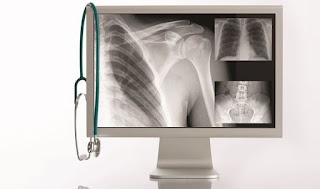Over the past couple of weeks, I have noticed a growing trend of patients that have sought out physical therapy treatment on their own, without their physician’s recommendation and sometimes in spite of it. The alarming part is that these patients were relatively young, all had recent fractures that were cast, and were all high-level athletes.
To be fair, there could be a number of reasons these patients were never specifically referred to physical therapy, but to ensure that the reason is not from a lack of information or public awareness, today’s article will review the evidenced based reasoning why physical therapy should be the standard course of care after a cast comes off.
First, let’s talk about fractures in general and what is happening during the healing process. A bone can be fractured — or broken — a number of different ways and as a result of a variety of stresses. Breaks can take on a spiral pattern, they can be displaced, or even splintered; but when it comes to healing them — they all need to be immobilized. This is where the ubiquitous “cast” enters the equation. We’ve all had them, had our friends sign them, and struggled to find the right cooking utensil to stick down them to reach those hard to reach itches.
The primary purpose of the cast is to simply hold the bone still so that as our body builds at first a soft, then hard, bony callus, the healing process is not disrupted, prolonged, or prevented from happening all together.
So a cast is a great, low tech, tool to help ensure successful healing from a fracture, but a cast does some other things as well, however, which are not so beneficial. The simple act of immobilizing any body part can contribute to joint stiffness, atrophy or muscle wasting, and can result in a loss of motor control/coordination.
These side effects of being casted are almost entirely unavoidable, nor are they too serious, but they do need to be addressed before considering yourself fully healed. When the cast comes off after about six weeks, it is not recommended that you simply run back out on the field and do the things that you were doing before — no matter how young and healthy you are. In fact doing so predisposes you to secondary injuries that would be completely avoidable.
Physical therapy is the best way to address each one of these aforementioned impairments and ensure that when you do return to sport, you will do successfully and injury free. PT — while controlling for pain and swelling — will first restore full range of motion addressing both the bony components of joints and soft tissue, begin an appropriate strengthening progression and provide specific activities to regain coordination and balance to allow for a successful return to any sport.
In other words, without it, you are missing out on one of these most critical components of your overall recovery and you shouldn’t let that happen.
(Source: handfordsentinel.com)

No comments:
Post a Comment